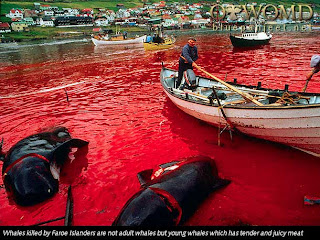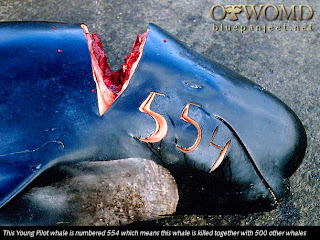“TSUNAMI - THE AFTERMATH” focuses on the harrowing aftermath of the tsunami that devastated the coast of Thailand - Krabi, Phang Nga and Phuket on Dec 26, 2004.
The production, from Kudos Film and TV, has been commissioned by the BBC and HBO channels, with a screenplay penned by award-winning writer Abi Morgan. With the working title ‘Tsunami’, the two-part mini-series will take a hard look at how the real life disaster affected a disparate group of fictional characters from tourists to aid agency officials. Many celebrity names - Sophie Okonedo, Gina McKee, Tim Roth and Toni Collette - have been associated with the production, but none have been confirmed at the time of writing. There has been particular outrage at a poster for an open audition, originating from the local Thai casting team, that lists the type of extras required for the film as: “Victim [...] A lot of people!!!!”.
Filming is expected to take around two months.
Here are some of the film's stars at an HBO press conference, along with some of their thoughts on filming:
Tim Roth plays Nick, a hard-nosed reporter dispatched by an international news agency in the Thai capital on the day of the tsunami to cover the disaster. He said "I was very wary of it," Tim Roth admitted about taking a role in the miniseries coming in December, less than two years after 300,000 were killed in the tragedy. "But I found it not to be exploitive at all. If I lost my kid, our family, I don't know that I'd watch it. But I think it's quite honorable."
Toni Collette plays an Australian missionary teacher caught up in the aftermath of the deadly Indian Ocean tsunami of Dec 2004. "She's an Australian woman who has been living in Thailand for 11 years," Collette says, "a Christian who runs an education programme for local kids in local fishing villages. Some people may think it's too early for a film about the tsunami, (and) it may be too early for the survivors, but it's not too early to tell their story for the rest of the world."
Toni Collette agreed, saying, "I was slightly nervous," but she cited a survivor who said, "Maybe it's too early for the survivors, but it's not too early for the people who weren't there."
Sophie Okenedo and Chiwetel Ejiofor play married couple Ian and Susie Carter, who are on holiday in Thailand when the tsunami strikes. Ian hangs onto his child as long as he can, but the wave is too powerful and he loses hold. The film follows the Carters' search to locate their child.
Since the production shot on location in Thailand in areas devastated by the tsunami, Sophie Okonedo conceded the work was difficult. "We cried quite a lot of the time," she said. "It was very emotional because it was all around us. You didn't have to do too much acting."
(L.A. Daily News, 18/7/06)
The 2004 Indian Ocean earthquake:
It had a magnitude of 9.3, triggered a series of lethal tsunamis on December 26, 2004 that killed approximately 230,000 people (including 168,000 in Indonesia alone), making it the deadliest tsunami as well as one of the worst natural disasters in recorded history. It also had one of the largest earthquakes.
The tsunami killed people over an area ranging from the immediate vicinity of the quake in Indonesia, Thailand and the north-western coast of Malaysia to thousands of kilometres away in Bangladesh, India, Sri Lanka, the Maldives, and even as far as Somalia, Kenya and Tanzania in eastern Africa.
Reflection movie:
As its title suggests, HBO Films' Tsunami: The Aftermath begins not with a crashing wave of water but rather with something far more chilling.
A boatload of vacationing scuba divers returns to their Phuket resort after a morning outing on December 26, 2004 and notice all sorts of debris, and then bodies, in the water. At the dock they see that the entire landscape is destroyed, the hotel is in ruins, and everyone, including their families and friends, is gone. As they run through the wreckage screaming, you'll feel chills. Among the group is Susie Carter (Sophie Okonedo), who quickly reunites with her husband Ian (Chiwetel Ejiofor) but is devastated to learn their four-year-old daughter slipped out of her father's arms and has disappeared. Meanwhile, Kim Peabody (Gina McKee) has lost her husband but finds her teenage son horribly injured. The Thai perspective comes from Than (Samrit Machielsen), a young hotel worker who aids guests even as he realizes his own nearby village (and everyone in it) is probably gone.
The British Consul Tony Whittaker (Hugh Bonneville) rushes in from Bangkok accompanied by a scrappy aid worker named Kathy (Toni Collette) and finds himself utterly unable to provide what his stranded countrymen need. Hot on his heels is muckraking gonzo journalist Nick Fraser (Tim Roth) and his photographer sidekick Chai (Will Yun Lee) who zip around on a motorcycle with sidecar looking for stories.
The multiple storylines bounce off each other as the chaotic days following the tsunami unfold. For Ian and Susie, terror morphs into panic as they race around looking for their daughter. Susie can't help but cruelly blame Ian for "losing" their daughter, and he heads off on a frantic search of temples, hospitals, and morgues looking for information. Susie, on the other hand, is nearly catatonic with horror. Kim worries that her son will die from his injuries but faces the ineptitude of Tony and his consulate, while Kathy does what she can to help and also tends to the Thai community. Nick is outraged to discover that Buddhist monks are burning bodies that haven't been identified, and in one of many East-vs.-West cultural clashes, Chai explains the Buddhist attitude toward death and urges Nick, who's firing off angry news bulletins to Europe, to accept those differences. Than eventually returns to his ruined village and takes his grandmother's cherished bracelets only to be arrested for looting even as he watches a secret government land grab unfold. Will a megaresort sweep in and steal his village's beach? Nick is soon on the story.
That's a lot of plot (the film runs over three hours), but the stories speed along in gripping fashion. The question of whether Ian and Susie will find their daughter alive is the most dramatic throughline, and Okenedo and Ejiofor, who turn in Golden Globe-nominated performances, are outstanding. It's as if they're acting out their own little Beckett psychodrama in the midst of all this chaos. (Collette earned a Golden Globe nomination as well.) With each plot line, you'll appreciate writer Abi Morgan's rigorous avoidance of clichéd happy endings. This is tough stuff. But it's the production designers who really deserve the trophies. Tsunami looks fantastic, and the making-of featurette is essential viewing for anyone who's curious about how the team went in to recreate devastation that the community had just spent more than a year cleaning up. When the monks burn the bodies and when Kim and Ian make terrifying trips to the morgue, you can almost smell the stench. It makes you feel like you are there... and glad you weren't.






















